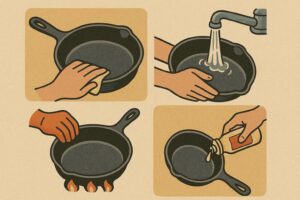It’s a simple gesture. Two men meet. Hands reach out. Grips tighten. It lasts maybe two seconds. But in that moment, a surprising amount is communicated — especially if one man naturally turns the other’s hand over during the shake.
We don’t always think about what our body is saying when our mouth is silent. But handshakes are full of signals: dominance, respect, equality, insecurity, openness. In particular, that subtle motion — turning someone’s hand so your palm is on top — says something loud, whether you mean it to or not.
This post breaks down what it means psychologically when a man turns your hand over during a handshake, what it says if you’re the one doing it, and what happens when two men both reach for the upper hand.
The Handshake as a Social Signal
Handshakes go back centuries. Originally, they were a way to show you weren’t holding a weapon — a gesture of peace. Over time, it evolved into a standard greeting, especially in professional or formal settings.
But even today, a handshake does more than say hello. It silently communicates:
Who’s leading the interaction
How confident you are
How much respect you’re offering
And, sometimes, how much respect you expect in return
That’s why people remember a handshake that feels “off.” It wasn’t the grip strength — it was the message underneath it.
What It Means When a Man Turns Your Hand Over
If a man shakes your hand and subtly turns your hand palm-up (meaning his palm is facing down), it’s usually an unconscious attempt to take the dominant position. In body language, the palm-down position is associated with control or leadership. It’s not always meant aggressively — but it often sends the message, “I’m in charge here.”
This kind of handshake may come off differently depending on the setting:
In business or leadership circles, it can be read as confidence and authority.
In casual or social settings, it might feel pushy or unnecessarily assertive.
If paired with a strong grip and intense eye contact, it can feel like a power move.
Of course, not every palm-down handshake is loaded with intention. But it’s worth noting — especially if it feels like the other person is trying to subtly reposition the dynamic.
What It Says If You’re the One Doing It
If you’re the kind of man who naturally turns someone’s hand over when shaking hands — without thinking about it — it says a few key things about you.
First, it probably means you’re comfortable taking the lead. Whether it’s in conversation, decision-making, or relationships, you might carry an internal sense of responsibility or authority. You may not even realize it, but your body language often acts like you’re setting the tone.
Second, it could mean you’re wired for confidence and control. You may not be trying to dominate anyone — but your instincts lean toward influence. It’s not arrogance. It’s a kind of presence.
Lastly, it might reflect how you were raised or trained. In some circles (business, military, sales), assertive handshakes are taught as part of professional development. You might simply be doing what you were shown was “strong.”
Bottom line: there’s nothing wrong with being the kind of man who leads. But self-awareness helps you know when to lead and when to level the field.
When Two Men Share a Dominant Handshake
Sometimes, two men both go in for a dominant handshake — firm grip, confident stance, a slight effort to position the other’s hand. Rather than turning into a struggle, this moment often becomes one of mutual recognition.
What usually happens? The hands meet in a vertical, neutral position — neither palm-up nor down. It’s an unspoken agreement: We’re equals. That middle ground reflects mutual respect, even if both are used to being in charge.
This kind of handshake happens often between strong personalities — leaders, entrepreneurs, athletes, etc. It’s not about “winning” the interaction. It’s about acknowledging the other man as someone worth meeting on level ground.
In fact, how a man responds in this moment says more than who initiated the dominant gesture. A man who adjusts, smiles, and moves into conversation without needing to control the moment shows strength, maturity, and emotional intelligence.
Cultural and Learned Behavior
Not every handshake style is personality-based. Some of it is learned — through upbringing, culture, or career.
In certain communities or industries, the handshake is part of the uniform. Sales training, military discipline, old-school mentorship — all often teach that a firm, confident, palm-down handshake is the “right” way to do it.
If you grew up watching men model that kind of shake, you may be carrying that tradition without realizing it. And there’s nothing wrong with that — as long as it’s paired with kindness, humility, and the ability to adapt.
Reading the Room: When to Adjust
Not every moment calls for a strong handshake or a dominant grip. Emotional intelligence means knowing when to soften, how to read cues, and where to meet someone with openness instead of intensity.
A few examples:
Job interview: Firm but not overpowering
Meeting a grieving friend: Gentle and warm
Introducing yourself to a high-ranking executive: Match their energy, don’t overcompensate
The goal isn’t to control the handshake — it’s to use it to show presence, respect, and confidence in the right balance.
The Departing Handshake
A handshake might seem small, but it’s one of the first things someone notices. And in those first few seconds, your body language can speak volumes.
If you naturally turn someone’s hand over in a handshake, it doesn’t mean you’re aggressive or trying to prove something. It might just mean you’re wired to lead. But knowing what it communicates — and when to let that go — is what separates a good handshake from a great one.
So next time you shake hands with someone, pay attention. Are you leading? Following? Meeting in the middle?
Sometimes, the real conversation starts before anyone says a word.








